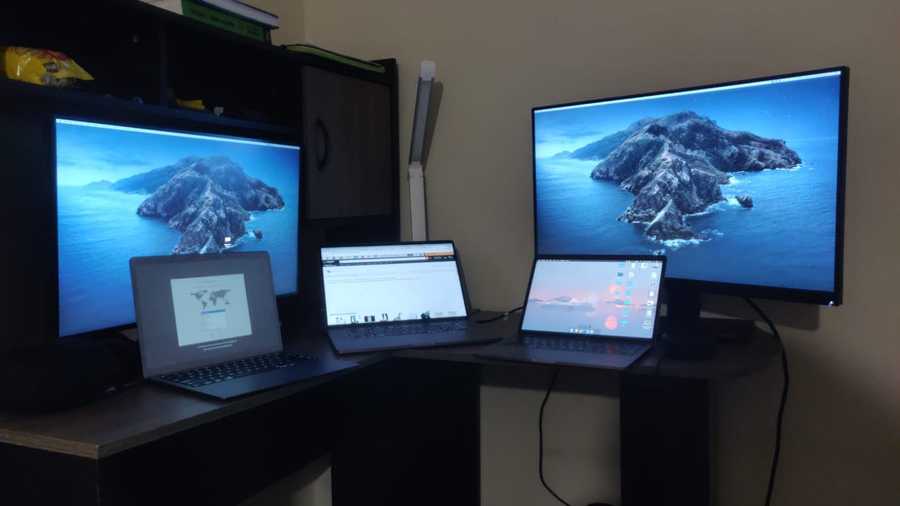Inside Amazon
August 31, 2020 • 4 min read
This summer I interned with Earth's most customer-centric company, Amazon. Who would have imagined being an intern would be possible remotely as well. Over the course of 12 weeks, I worked with Amazon's Vine Team on a project to help better communicate with participants in the program. This involved researching and writing queries to leverage program data, building a data pipeline to fetch, calculate, store said data, creating API's and making front-end changes in services to surface this information to program participants
Day 1 (May 11, 2020): New Hire Orientation
Amazon would ship us a laptop on Friday before our start week. Due to logistic issues, I didn't receive my laptop and the shipment was lost. So I had to work on Amazon workspaces for the first week of my internship. However, Amazon's IT team was quick and responsive to ship me another laptop so that I continue working.
I spent the majority of my time working from Gainesville, Florida but all of my team worked from Seattle, Washington, which is 3 hours behind. Initially, this was a little problematic but my team was kind enough to let me work on my schedule and would try to set up meetings that would work for me as well as the team.
My day would start by waking up at 8 AM and get 3 hours of uninterrupted work. I would get a lot of things done as this would be the most productive part of my day. At 11 AM, I would make my breakfast and eat it with my flatmates. After my breakfast, I would go through my notes to check any pending work before my standup. My daily standup meeting was at 2 PM and sometimes I would have 1:1 before my standup. Standup meetings are fairly common at Amazon: it's a small 30 min meeting where every team member gets 2 min to go over the progress of each day and update their goals for the current day. The remainder of my day would go by working over my goals and other 1:1 meetings with my team members
Work Setup

The Culture of Documents
Amazon has a deep rooted culture of documenting everything. Before even writing one line of code, I had to write an extensive network of the document to convince other people about my approach towards solving that problem. This included describing customer and their needs, a document describing how the project would help the stakeholders, a document describing the design and workflow of my project.
This is how any Amazon Engineer, must propose the project to the team. This is because Amazon believes in working backward from the customer to making sure that all the work we do will bring some value to the customer. Writing data-driven documents is a great value to communicate your thought process for the present and the future team members. It is a great skill to develop even outside of Amazon.
The Final Presentation
Every intern has to conduct a presentation before their org about their project and why it's valuable to the team and to Amazon. In my opinion, this would be the hardest thing I had to do at Amazon.
You have the option to do a live demo or a video demo of your project and then take any questions from the Senior Engineers or Senior Manager. In order to have a smooth presentation, I did multiple dry runs before my team member and made sure to take their input and address it within the slide if needed.
By the time the presentation date came around, I was well prepared and my presentation was tuned to answer most of the questions. In all, the presentation went great with a couple of questions from other team members.
Final Thoughts
This summer at Amazon was truly a highlight of my life, and if any of my old coworkers are reading this, especially my manager, mentor, and co-interns, I want to thank you for guiding me to succeed at Amazon.
← Configure Google domain to herokuMy Journey on learning F# →